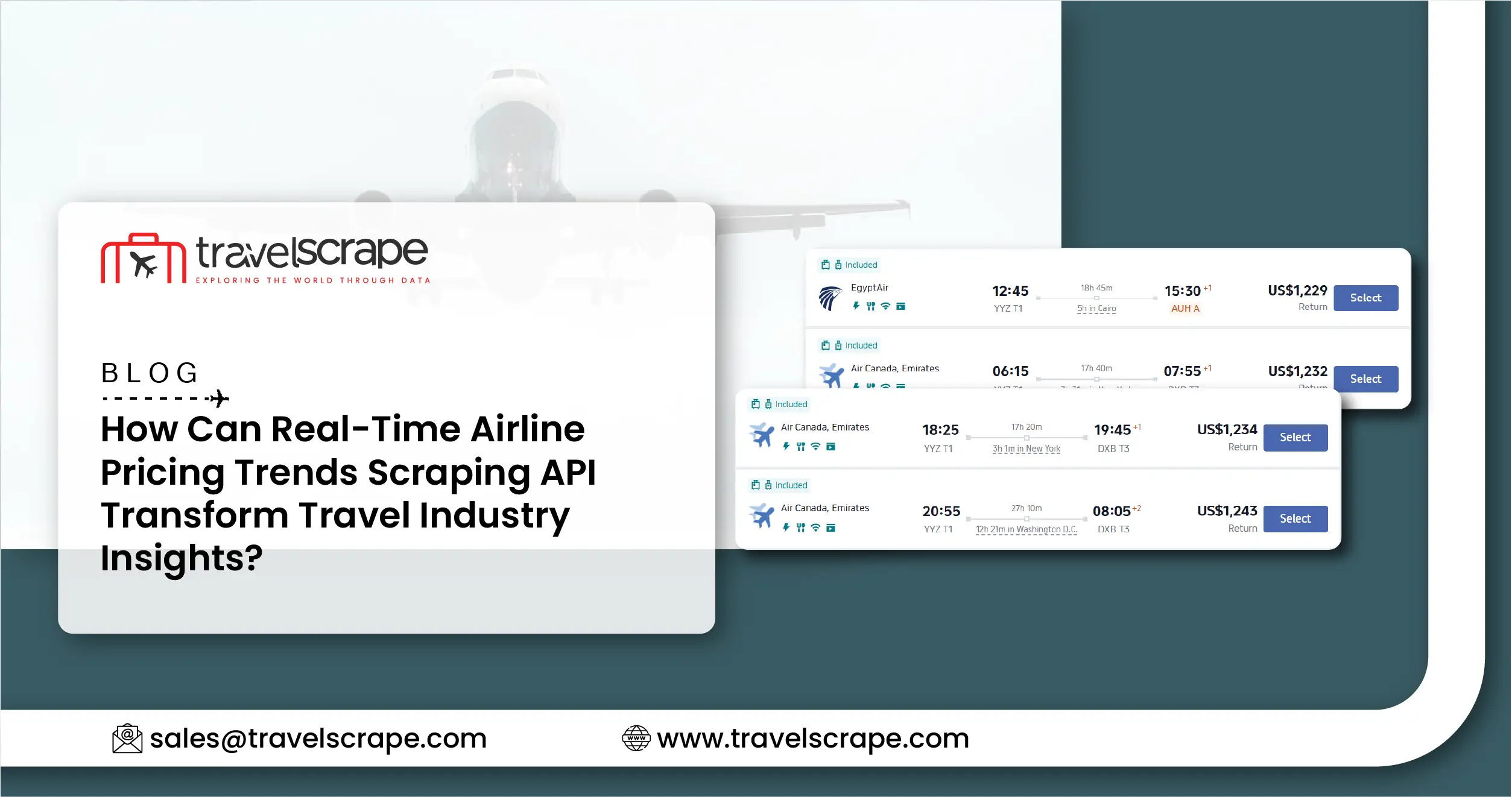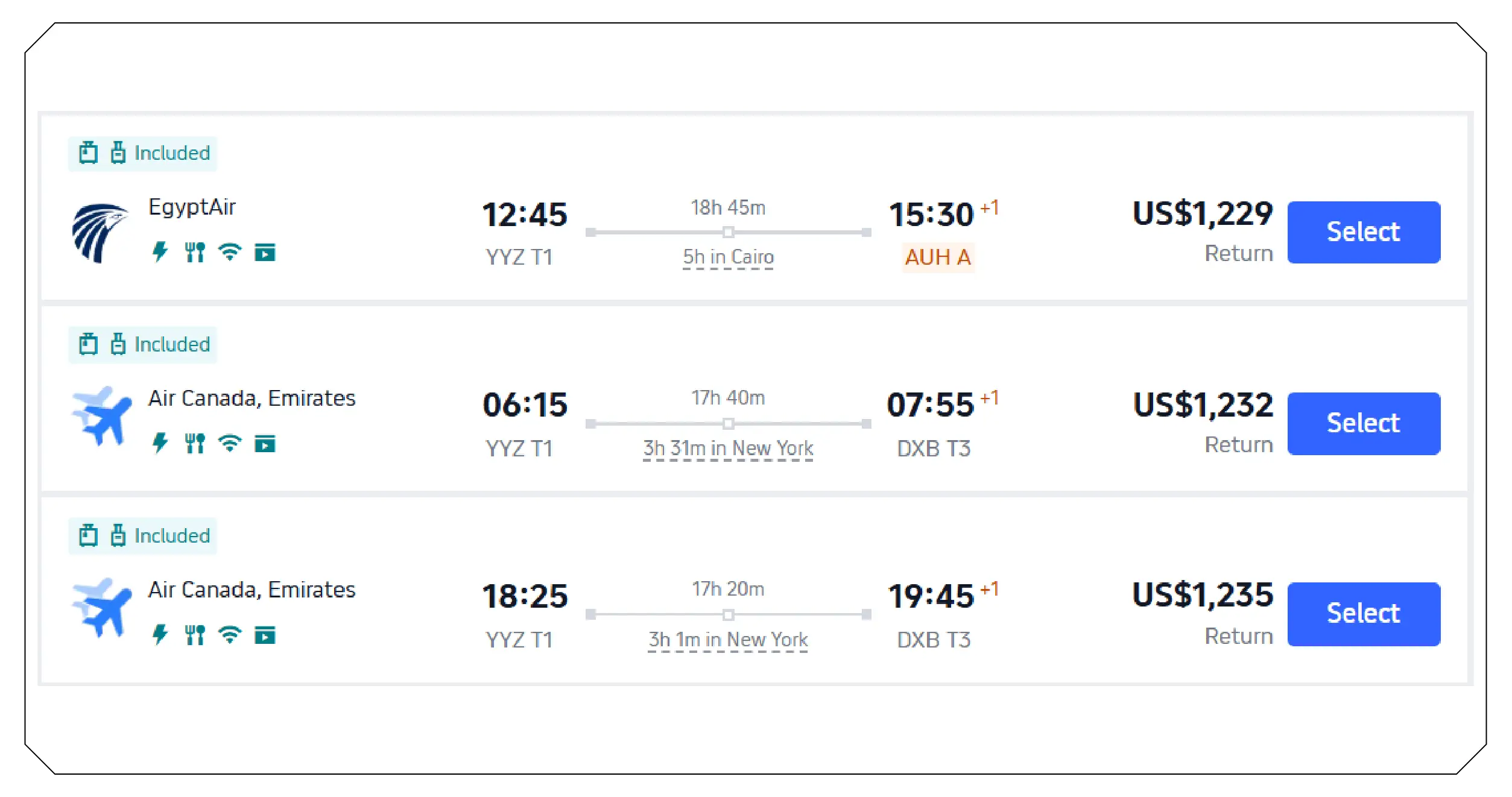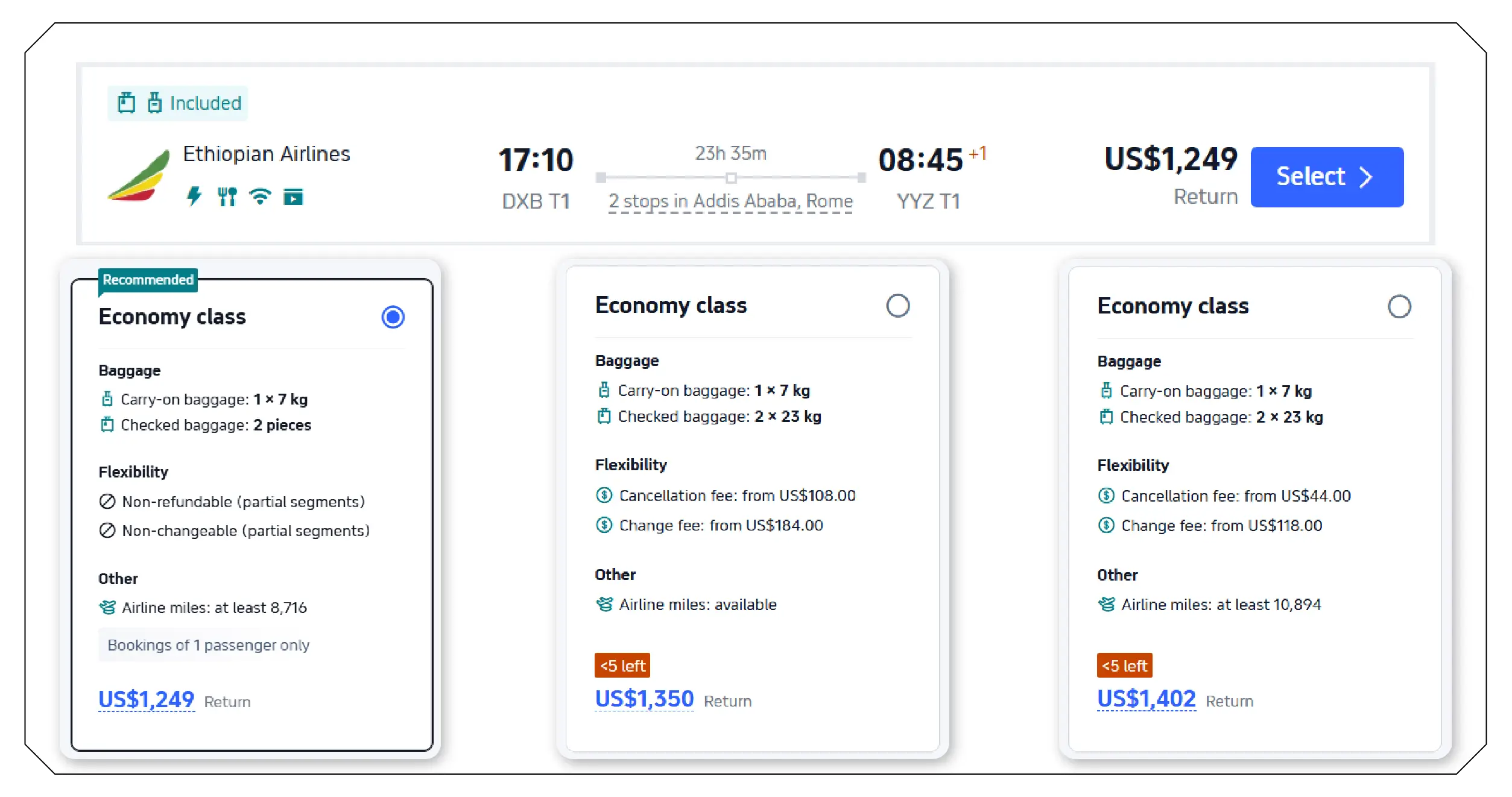How Can Real-Time Airline Pricing Trends Scraping API Transform Travel Industry Insights?

Introduction
The airline industry has always been a cornerstone of global connectivity, yet its complexity and dynamism make it one of the most challenging sectors to analyze. Flight fares fluctuate by the minute, influenced by factors such as demand, competition, seasonal shifts, geopolitical events, and even weather conditions. Businesses—ranging from Online Travel Agencies (OTAs) to data-driven startups—need real-time and accurate intelligence to remain competitive. This is where Real-Time Airline Pricing Trends Scraping API becomes a game-changer, offering unparalleled access to timely and structured flight fare datasets.
At its core, the adoption of Airline Data Scraping Services ensures that companies do not rely solely on outdated or generic information from booking engines, but instead gain actionable insights into the live pricing environment. When brands choose to Extract Airline Pricing Trends via API, they arm themselves with data that fuels strategic pricing, customer engagement, and revenue optimization.
Why Airline Pricing Intelligence Matters?

Airline pricing is notoriously volatile. A single route’s fare can change multiple times a day due to algorithm-driven yield management. For travelers, this means uncertainty; for businesses, it presents both risk and opportunity. Understanding pricing movements allows companies to:
- Develop predictive models for fare forecasting.
- Optimize booking and marketing campaigns.
- Benchmark against competitors in real time.
- Spot anomalies such as sudden spikes or discounts.
This is where Flight Price Data Intelligence plays an invaluable role. By collecting and analyzing structured flight data, businesses can convert chaotic fare shifts into actionable knowledge.
The Role of APIs in Airline Data Collection
Manual fare tracking is impractical in today’s fast-paced travel ecosystem. APIs provide a scalable and automated solution that delivers structured pricing data directly into business systems, enabling seamless integration and automation. APIs designed for airline data scraping offer:
- Real-time access: Fare updates in seconds.
- Scalability: Ability to handle data across thousands of routes and airlines simultaneously.
- Consistency: Reliable format across datasets for seamless integration.
- Customization: Tailored scraping to extract only what’s relevant to the business.
For instance, companies that Scrape Airline Fare Trends for Market Analysis can analyze long-term pricing movements across geographies and airlines. This supports informed decision-making for travel agencies, aggregators, and corporate travel planners alike.
Who Benefits from Airline Pricing Scraping APIs?
Airline pricing scraping APIs provide a competitive edge by delivering real-time fare insights across routes and carriers. They benefit online travel agencies seeking dynamic pricing, airlines monitoring competitors, startups creating innovative travel tools, and researchers analyzing market trends. By transforming fluctuating fares into actionable intelligence, these APIs empower diverse stakeholders in the global travel ecosystem.
1. Online Travel Agencies (OTAs)
OTAs thrive on competitive pricing. If an OTA’s platform consistently offers better deals than rivals, customer retention skyrockets. APIs enable OTAs to dynamically adjust displayed fares, staying ahead of market fluctuations.
2. Airlines
Even airlines themselves benefit from monitoring competitor fares. By benchmarking pricing strategies, carriers can optimize yield management systems and stay competitive.
3. Travel Startups
New-age startups focusing on flight search, budget travel planning, or loyalty programs use APIs to create innovative products. For them, Travel Scraping API Services provide the raw material for unique customer experiences.
4. Market Researchers
Consulting firms and data analysts utilize APIs to identify pricing trends, predict fare volatility, and provide valuable insights to their corporate clients.
Advantages of Real-Time Pricing Data
Real-time pricing data offers powerful advantages for the airline industry, enabling businesses to respond instantly to fare fluctuations and market shifts. By accessing live insights, airlines and OTAs can optimize revenue strategies, deliver greater transparency to travelers, benchmark against competitors, and forecast future trends. This agility transforms raw pricing data into actionable intelligence that drives smarter decisions.
1. Enhanced Revenue Management
Dynamic pricing in the airline industry depends heavily on accurate, real-time data. The more granular and frequent the updates, the more effective the revenue optimization strategies become. With access to live fare fluctuations, airlines and OTAs can refine their yield management systems, set competitive ticket prices, and maximize revenue per seat. By leveraging comprehensive pricing datasets, businesses can quickly identify emerging trends, respond to sudden changes in demand, and strategically deploy promotions or discounts to capitalize on these opportunities. This ensures not only better profitability but also higher efficiency in managing inventory across multiple routes.
2. Customer Transparency
Today’s travelers demand clarity and confidence when booking flights. Many platforms now incorporate features like fare trend graphs and booking recommendations, guiding customers on when it’s the best time to buy. Airline scraping APIs enable these features by continuously delivering updated pricing information in real-time. This transparency helps reduce customer anxiety about fluctuating fares, builds trust in travel platforms, and enhances the overall booking experience. For businesses, offering such insights is a key differentiator that increases user engagement and improves brand loyalty.
3. Competitive Benchmarking
In the highly competitive airline industry, monitoring competitor strategies is essential. By being able to Monitor airline pricing patterns using scraping API, businesses can track how rivals adjust fares in response to demand surges, seasonal travel, or external market shifts. This intelligence allows airlines, OTAs, and travel platforms to benchmark their offerings against competitors, identify gaps in pricing strategies, and react quickly with competitive fares or added value services. Competitive benchmarking ensures businesses remain relevant and prevents revenue losses to more agile competitors.
4. Strategic Forecasting
Beyond immediate revenue gains, long-term forecasting is a critical advantage of scraping APIs. By analyzing historical fare data and leveraging insights from an Airline Price Change Dataset, airlines and OTAs can predict future pricing behaviors. This predictive modeling helps anticipate upcoming fare increases or drops tied to seasonal peaks, holidays, or unexpected global events. With these insights, companies can align marketing campaigns, adjust flight capacities, and optimize budget planning. Strategic forecasting not only supports profitability but also enables businesses to take a proactive stance in navigating market uncertainties.
Case Study: How APIs Reshape Airline Business Decisions

Imagine a scenario: A European OTA wants to expand aggressively into the Asia-Pacific region. The challenge? The market is highly competitive, with fares changing rapidly. By integrating a real-time scraping API, the OTA gains access to:
- Historical pricing datasets: across routes like London–Singapore or Paris–Tokyo.
- Real-time fare fluctuations: to optimize advertising campaigns.
- Seasonal patterns: such as Lunar New Year travel spikes—to forecast demand accurately.
This intelligence allows the OTA to enter the market strategically, ensuring competitive pricing while minimizing risk.
Technical Insights: How Scraping APIs Work
Airline scraping APIs are not mere web crawlers; they are sophisticated systems designed for accuracy and compliance. Here’s how they function:
- Data Collection Layer: APIs connect with publicly available airline and OTA websites, extracting structured pricing data.
- Normalization Layer: Prices come in varying formats across different platforms; APIs standardize this data for easy integration.
- Delivery Layer: Structured datasets are delivered via JSON, XML, or CSV formats, which are easily integrated into analytics tools or dashboards.
This technical framework ensures that businesses can Scrape airline pricing for competitive market intelligence without investing heavily in in-house infrastructure.
Overcoming Challenges in Airline Data Scraping
Airline data scraping is not without hurdles. Some challenges include:
- Dynamic Pricing Models: Airlines update fares multiple times daily, making consistent tracking essential.
- Captcha and Anti-Bot Systems: Many sites deploy barriers to scraping, requiring advanced bypass techniques.
- Regulatory Compliance: Scraping must align with legal and ethical frameworks.
- Data Overload: Extracting terabytes of pricing data requires robust storage and analytics capabilities.
However, with advanced scraping APIs and cloud-based processing, these challenges can be effectively mitigated.
Real-World Applications of Airline Pricing Data
1. Dynamic Travel Booking Platforms
Websites offering “best time to book” predictions rely heavily on APIs.
2. Corporate Travel Optimization
Businesses managing employee travel use scraped data to negotiate bulk deals or optimize travel budgets.
3. Market Expansion Planning
Airlines use competitive pricing insights to decide where to launch new routes or increase flight frequencies.
4. Tourism Boards
Even governments and tourism bodies utilize fare insights to forecast visitor influx and plan infrastructure.
The Future of Airline Data Scraping
As machine learning and artificial intelligence evolve, airline data scraping will shift from descriptive to predictive analytics. Future APIs will not only provide real-time data but also deliver AI-driven recommendations. For example, APIs suggest when an OTA should increase ad spending or when an airline should release promotional fares.
Additionally, integrating blockchain technology could enhance data security and transparency. Travelers could soon see verified, tamper-proof fare histories that guide their booking decisions.
Best Practices for Using Airline Pricing APIs
- Choose Reliable Providers: Not all APIs are equal. Evaluate providers based on data coverage, update frequency, and compliance track record.
- Focus on Relevant Data: Collect only what aligns with your business objectives. Over-collection can strain storage and analytics pipelines.
- Ensure Compliance: Stay updated with regional data regulations, especially in markets like the EU, which have stringent privacy and scraping laws.
- Integrate with Analytics Tools: Data alone has limited value unless integrated into visualization or BI tools that enable decision-making.
Strategic Impact on the Travel Industry

Harnessing real-time airline data is transforming the competitive dynamics of the travel industry. Online Travel Agencies (OTAs) that integrate scraping APIs gain the advantage of offering customers transparent fare predictions, helping travelers make informed booking decisions while improving trust and loyalty. Airlines also stand to benefit by fine-tuning their dynamic pricing strategies, ensuring routes remain profitable without alienating price-sensitive passengers. For emerging startups, live fare data creates opportunities to design entirely new business models—whether it’s personalized travel planning, innovative price alerts, or AI-driven booking platforms. The real power of real-time APIs lies in their ability to democratize access to airline data. What was once limited to large players with deep resources is now available to a broader range of businesses, enabling smaller firms to compete on equal footing. This shift fosters innovation, enhances competition, and ensures better value and transparency for travelers worldwide.
How Travel Scrape Can Help You?
- Custom API Solutions – We provide scalable scraping APIs tailored to your business needs, delivering structured airline fare data in real time across multiple routes and carriers.
- Comprehensive Data Coverage – Our services capture global flight prices, including low-cost carriers and regional airlines, ensuring no gaps in competitive insights.
- Real-Time Updates – We deliver continuous data refreshes, enabling you to track fare fluctuations instantly and make smarter, faster decisions.
- Seamless Integration – Data is provided in easy-to-use formats, such as JSON, CSV, or XML, ensuring smooth integration with your analytics tools, dashboards, or applications.
- Compliance & Reliability – We ensure ethical, secure, and compliant scraping practices, backed by reliable infrastructure that guarantees uninterrupted access to critical pricing trends.
Conclusion
In a hyper-competitive and fast-changing industry like aviation, access to timely and structured pricing data is no longer optional—it is essential. Businesses that adopt scraping technologies gain a decisive advantage, whether they are OTAs, airlines, or market researchers. Leveraging real-time APIs allows them to move beyond guesswork into data-driven precision.
By investing in scraping solutions, companies can Scrape airline pricing for competitive market intelligence, opening doors to smarter revenue management, customer transparency, and market expansion. The future of travel lies in transforming raw, fluctuating fares into actionable insights. That transformation begins with Web Scraping airline ticket rates for real-time insights and culminates in robust strategies powered by Flight Price Data Scraping.
Ready to elevate your travel business with cutting-edge data insights? Extract Aggregated Hotel Prices to identify competitive rates and optimize your revenue strategies efficiently. Discover emerging opportunities with tools to Extract Travel Industry Trends, leveraging comprehensive data to forecast market shifts and enhance your service offerings. Real-Time Travel Mobile App Data scraping helps stay ahead of competitors, gaining instant insights into bookings, promotions, and customer behavior across multiple platforms. Get in touch with Travel Scrape today to explore how our end-to-end data solutions can uncover new revenue streams, enhance your offerings, and strengthen your competitive edge in the travel market.

